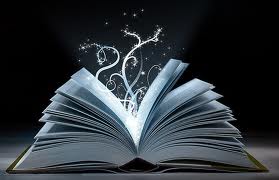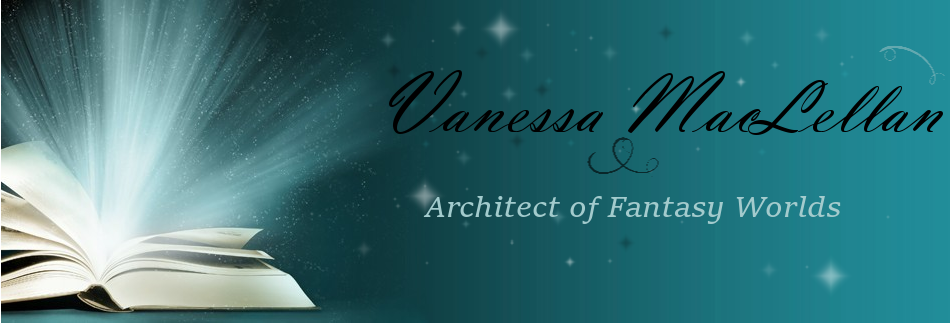Friend: What kind of book are you reading?
Me: Fantasy.
Friend: Magic and dragons?
Me: Ah, no. There’s this magical world that this guy falls into and now he’s the main magician.
Friend: So, does he have to defeat the demon king, all powerful and everything?
Me: Hmm, no, he has to run a school.
Friend: Is there a ghost trying to destroy the school. Is it dark and scary?
Me: *shakes head* It’s a comedy actually.
The Label Maker is Broken
As I wander down the fantasy isle of my local book store (yes, I am one of twelve people in the city who still go to the book store) I look over the variety of books there: Harry Potter, Dragonlance, Lord of the Rings, Dresden Files, The Onion Girl, Color of Magic, Wizard of Oz, Johnathan Strange and Mr. Norrell.
I’ve read all of these. Each one a fantasy. But, each so different. From the story framework, writing style, fantasy mixture, mythos, not a one is strictly comparable to the other, yet they are all fantasy.

I realized that it can be very hard to fine tune the type of fantasy a book is. So I thought about this and tried to bubble down the plethora of possibilities into something usable. It wasn’t very easy. Something could be high fantasy, with some dark elements (Game of Thrones). Or it can be epic fantasy in the contemporary world (Harry Potter). So, I popped open Wiki, tapped on my thinking cap, and struggled to define these genres (mainly for my own edification).
Twenty-one Subgenres
One website I found said there were 21 subgenres of fantasy. Twenty-one. I tried to list them out, and this is what I came up with.
High
Epic
Low
Urban
Dark
Sword and sorcery
Cross over
Contemporary
Literary
Paranormal romance
Hmm, that certainly doesn’t add up to twenty-one. So then I did more research and saw that Steampunk, Dystopian and Arthurian are considered subgenres. That’s just memorization, how about a pattern? What I want is a method (I’m an engineer by trade, did you know?) that can be utilized, not a list to be memorized.
Small Steps
Fantasy (Britannica): imaginative fiction dependent for effect on strangeness of setting (such as other worlds or times) and of characters (such as supernatural or unnatural beings). Science fiction can be seen as a form of fantasy, but the terms are not interchangeable, as science fiction usually is set in the future and is based on some aspect of science or technology, while fantasy is set in an imaginary world and features the magic of mythical beings.
Okay, so fantasy has strangeness and elements such as magic. That’s a very broad umbrella. But it is an umbrella and, as an engineer, I am certain I can pare down the many fantasy styles into a manageable formula.
It boils down to Low or High Fantasy.
Low Fantasy: Also known as Contemporary Fantasy (or sometimes Modern). It’s set in THIS world. The world as we know it, with cars, and pollution, and people bickering about who they are going to vote for in the next presidential election. Only, it’s got some strangeness and magic. Magic, in general, is pretty ‘low’ in Low Fantasy.
If it’s in this world, it’s Low Fantasy
High Fantasy: Okay, if it’s in ANOTHER world, it’s High Fantasy. Also ‘secondary world’. It’s a world with different land masses, different moons, different religions and political systems. There is magic, and strangeness, and a lot of it compared to our mundane world.
If it’s in another world, it’s High Fantasy
From here, it’s all gravy.
MacLellan Method Of Defining Fantasy Subgenres
From here on out, it’s all Influencing Categories and Writing Style/Voice
Influencing Categories are those specific characteristics that will drop the High or Low fantasy into a deeper classification. It helps to further define the genre by plot elements and world elements.
Plot Elements: Coming of Age. Cross over. Dark. Epic. Romantic. Adventure.
World Elements: Alternate History/Historical. Dystopian. Magical Realism. Mythic/Fairytale. Paranormal. Superhero. Urban.
Some Examples:
Epic: The big Plot. The big Quest. The Big Bad GUY! Often tied in with a coming-of-age flavor. Hero with 1000 faces.
Urban: A Low fantasy subgenre that’s written in the Gumshoe/Detective writing style, always set in an urban landscape.
Cross-over: Moving from one world to the next. Often from Low to High.
Magical Realism: Low fantasy… Very, very low fantasy. Sometimes just one tiny little aspect that makes it not of this world. Often whimsical in some sense.
Paranormal: Low fantasy. Mainly involving elements beyond the range of scientific explanation. A more subtle younger sibling of Urban or Superhero, often with a romantic bent.
And then there is the writing style and voice (a potentially very long list that’s hard to define), which is often tied in with the plot or world. A thriller has a different tone than a high fantasy. Also different authors have established distinct styles. We can call Hemmingway’s style to be sparse (he tells more by telling less.). And Kingsolver’s style is descriptive and poetic.
Literary
Comedic
Mystery
Romance
Thriller
Descriptive
Sparse
Now, based on this MMODFS (doesn’t roll off the tongue, does it?) let’s categorize the books I found on the bookstore shelves.
Harry Potter: Low fantasy. Epic. Coming-of-age.
Dragonlance: High. Epic. Adventure.
Lord of the Rings: High. Epic.
Dresden Files: Low. Urban. Thriller.
The Onion Girl: Low. Magical Realism. Literary
Color of Magic: High. Comedic.
Wizard of Oz: High (eventually), Cross-over.
Johnathan Strange and Mr Norrell: Low. Alternate History. Literary.
I know there are many more subgenres and flavors that you can pigeonhole something into, but I think this system offers a method to untangle the madness. You might ask me, where is Sword and Sorcery? Well, I’d put that usually in High fantasy and Adventure and leave it at that. Or Steampunk? And to me, that’s more science fiction, with a focus on the past versus the future.
You can still tell people it’s Arthurian, or Sword and Sorcery, or Epic and leave it at that and most readers of the genre know what to expect. But if it doesn’t fit any of the 21 prescribed genres, then I think the MMODFS can help place your story on the fantasy map.
How would you define your favorite books using this oh so useful tool? And am I missing something? Help me make the MMODFS better!
My novel, Three Great Lies is Low, Cross-over, Mythic, Historical, Literary. I have a modern woman from our world crossing over into mythical, ancient Egypt. Great! Now I know where it belongs on the shelf.

Hi, this is a comment.
To get started with moderating, editing, and deleting comments, please visit the Comments screen in the dashboard.
Commenter avatars come from Gravatar.